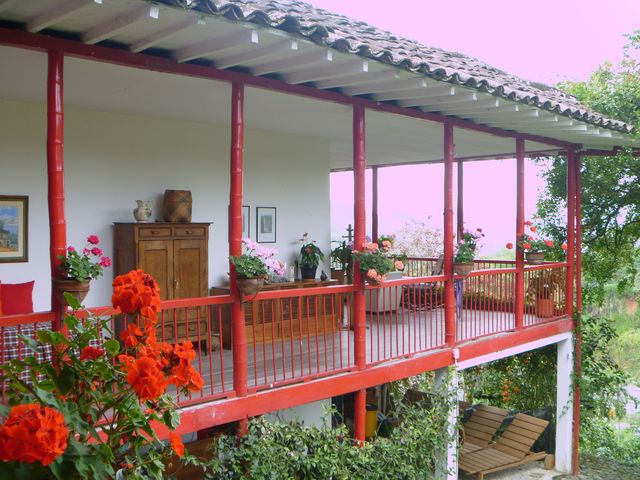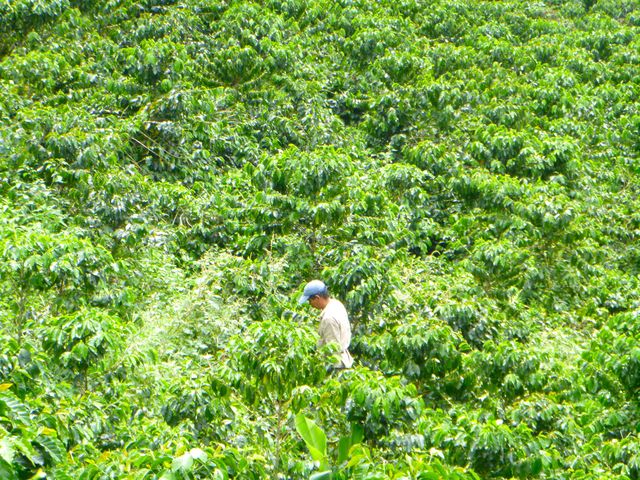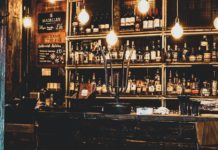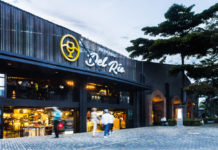
Writer’s note: This is part two of a two-part story. Click here for part one.
MANIZALES — The van headed south once again, this time about a half an hour to a coffee farm, and I wondered if I missed anything the night before in Manizales, if the Zona Rosa offered something special.
Nah, I thought. It’s so small and I have more than enough rumba in Medellín. Besides, I wanted to be fresh for an 8:30 a.m. departure to the farm because my favorite thing about Colombia is the long list of outdoor activities the country offers.
Hacienda Venecia, one of the coffee area’s famous farms, is one of them.
The Mountain House offers a tour that includes a guide and transportation for 30,000 pesos (about $15).You can see the coffee plants covering the hillside as you descend toward the farm, where a guide is there to greet you and offer you an espresso, a water, or both.
Ours was Alexander. He gave us about 30 different types of coffee samples to smell, to see if we could identify the flavor and the ingredients, then showed us how to use the machine to make espresso.
We also learned during this time that the countries outside Colombia receive their best product, always. The coffee is still great in Colombia, Alexander said — something I can attest to — but the best of it goes elsewhere — something I wouldn’t know because I never drank much coffee in the states.
We headed out to the fields after that, to see the plants up close, something the pickers see everyday as they pluck the beans that will produce some of the world’s best coffee.
The stroll through the fields took us to a dirt road, a creek, and eventually, a production house where Alexander showed us the machines used to clean the beans and prepare them for consumption. One machine peeled the skin of the beans, one cleaned them, one dried them, and so on.
We went to a room with large sacks to be sent elsewhere. I found a bag destined for Medellín.
During the walk from place to place, I noticed the brightly-colored birds that zipped from tree to tree, then vanished into the vegetation. One was bright blue, an azulejo. Another was mostly black with streaks of bright orange feathers, a nuestra candela. I wish I could have gotten pictures but I never got close enough.
Alex explained some history too, how central Colombia, from the Medellín area to the coffee region, are similar when it comes to food and the friendly disposition, but that they are not quite the same about social issues, as the coffee region is generally more conservative, the Medellín area more liberal.
The tour was almost over as we made it to the main house, a red-and-white colonial home enveloped by a spacious balcony. It’s a great place to stay if you want to be in the countryside, away from the city.

When we returned to the guest house, our starting point, lunch was almost ready. We had ajiaco, a garlicky soup that is one of my favorite Colombian dishes, with sides of avocado and arepa. The lunch was 10,000 pesos (about $5).
We then had about an hour to use the pool, but I passed. I wanted to relax then get a couple more photos of the farm. I took a few of a lone picker in one of the fields.
On the drive back to the city, Fabio, our driver, talked to me about fútbol. We talked about the amazing Lionel Messi and his recent play for Barcelona, and how he has a hard time duplicating it when he’s with Argentina’s national team. And we talked about the upcoming game between Caldas and Armenia, what they call a clasico in this region.
That reminded me: there was a clasico in a couple of days at the estadio in Medellín, the city rivalry game between Atlético Nacional and Independiente Medellín. We chatted about that, then shifted the conversation back to the Coffee Triangle, an area I surely will visit again.













“as the coffee region is generally more conservative”
Of course it is.
The land is owned by the Colombian elite who are the descendents of the Spanish invaders. They are conservative because as they will tell you “Our great-great grandparents stole and killed the natives for the land fair and square!”.
The status quo is great when you are at the top of the pyramid.
sounds like the united states
I can’t wait to visit this lovely place, this is very interesting… I do love to share it on my pinterest…
Please do Florence 🙂 Let me know if you have any trouble pinning it.
Hi Ryan, I’d love to go to this Hacienda and I’ll be travelling from the north of Colombia. Just wondering how you got transport to/from the Hacienda? Do you know how far it is from the major airports around like Medellin?
Thanks!
HI
I LOOKING FOR PRICE LIST.
AND TRANSPORT TO EUROPE.
Very good experience Ryan